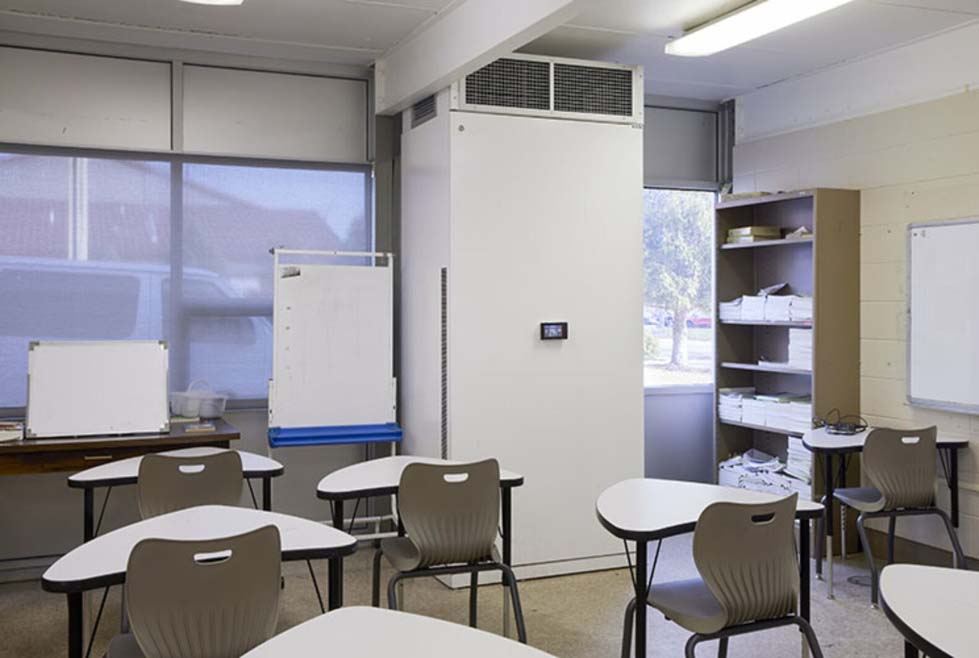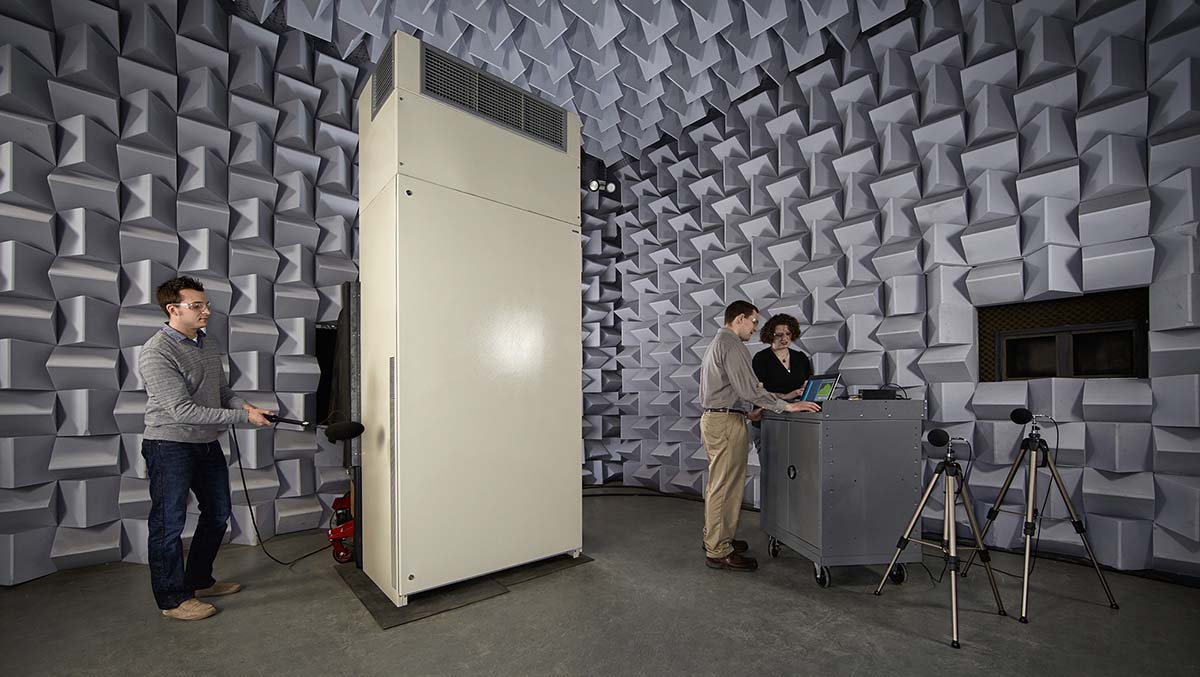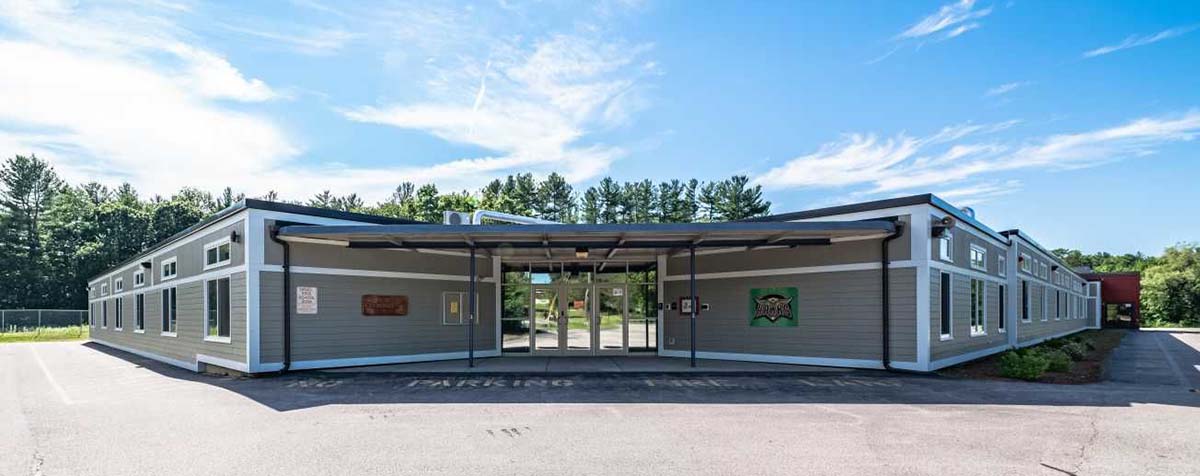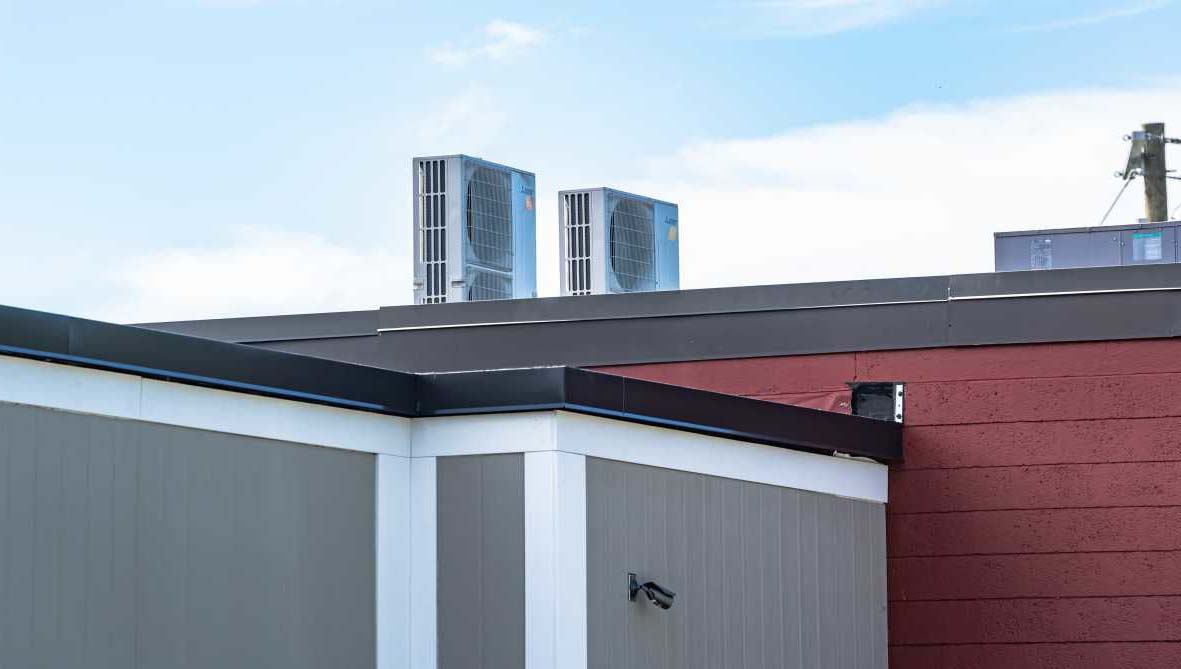Providing comfortable indoor learning environments is not cheap. On average, K-12 buildings in the U.S. spend 67 cents per square foot on electricity and 19 cents per square foot on natural gas annually. In a typical school building, lighting, space heating, and water heating represent between 74%-86% of total energy use.
After payroll, utility spending tops most school districts’ budgets. As administrators abound struggle with tight budgets and bureaucratic hurdles, many districts continue to push legacy HVAC systems to exhaustion, resulting in unnecessary spending on energy inefficiency.
Federal research indicates that approximately two out of every five districts need to update or replace HVAC systems in at least half of their schools, representing about 36,000 schools nationwide.
“HVAC systems currently installed in schools result in carbon emissions imposing an estimated $2 billion a year in societal costs,” said Emma Hines, senior associate, carbon-free building program, RMI. “To reduce this cost, schools must shift away from outdated, inefficient HVAC systems reliant on polluting fossil fuels in favor of efficient, electric systems. K-12 schools need all-electric, high-performance HVAC systems that deliver health and learning benefits to students and provide broader climate and economic benefits for decades to come.”
Leading By Example
District 118
Skip Truex, director of buildings and grounds for District 118 in Danville, Illinois, sought an HVAC solution to replace the outdated and inefficient steam systems in several of the district’s schools. His primary goal was to ensure a comfortable, safe, and healthy environment for students and staff. Reliable performance, quiet operation, and exceptional IAQ topped his list of priorities. The unit he selected, Airedale’s ClassMate cooling and heat pump, checked many of those boxes.

HEAD OF THE CLASS: Airedale’s ClassMate is a quiet, single-packaged unit engineered for efficiency, noise reduction, and a small footprint. (Courtesy of Modine)

LAB TESTED: Airedale’s ClassMate was tested in a semi-anechoic sound room to ensure it met the needs of modern classrooms. (Courtesy of Modine)
“In addition to the comfort and efficiencies the ClassMates enable, the individual control of each classroom is a huge advantage,” said Truex, who has 30-plus years of commercial/industrial HVAC experience. “If we have a problem, we can quickly fix it without losing an entire wing.”
Truex said the units have also delivered financial and energy savings compared to the previous system, citing a 50% reduction in energy usage, classrooms that maintain more consistent temperatures, units that typically run in low speed, and zero noise complaints from the school’s 600-plus students.
Hollis Primary School
Hollis Primary School (HPS) in Hollis, New Hampshire, has served its community for generations — though, lately, indoor conditions have been less than ideal. While the school’s 1950s-era design was intended to maximize natural light, it resulted in excess solar gain and heated masonry, which produced uncomfortable temperatures, as high as 92°F, well into November and December.
“It was awful,” said Paula Izbicki, principal, HPS. “No matter what the temperature was outside, we would have really hot and cold classrooms. If you walked through a hallway from one classroom to another, you could experience a 10° difference. The situation wasn’t conducive to learning.”
School administrators elected to encase the brick structure with a spray-foam envelope and install air-source heat pumps from Mitsubishi Electric Trane HVAC US (METUS). Each zone, including each of the retrofitted 900-square-foot classrooms, is served by a wall-mounted indoor unit. Equipped with Hyper-Heating Inverter (H2i) technology for heating during severe cold, the school’s MXZ multi-zone outdoor units use only the energy needed to keep each zone at its set point. This ability to modulate compressor performance means less electrical consumption, making the system a natural fit for the school’s use of renewable energy.

PUMP IT UP: Hollis Primary School administrators elected to encase the brick structure with a spray-foam envelope and install air-source heat pumps from Mitsubishi Electric Trane HVAC US. (Courtesy of METUS)

HYPER HEATING: Equipped with Hyper-Heating INVERTER (H2i®) technology for heating during severe cold, Hollis Primary School’s MXZ multi-zone outdoor units use only the energy needed to keep each zone at its set point. (Courtesy of METUS)
The METUS heat pumps’ variable-speed compressors adjust the system’s capacity to match a zone’s actual energy needs.
“Ideally, you want to set the temperature and leave the system alone,” said Dick Henry, founding director of DDH Energy Consulting LLC. “It’s not like the oil boilers the school had. When you have air-source heat pumps, you get the most efficiency at part load.”
In terms of comfort, the retrofit transformed HPS.
“The experience has been great,” commented Izbicki. “When you set the units to a certain temperature, the room just stays at that temperature. So, we’re comfortable now, and we don’t really think about the system. The kids are energetic and much happier. The learning environment has improved dramatically because it is so much more comfortable.”

PARTIAL-LOAD PERFORMANCE: The METUS heat pumps’ variable-speed compressors adjust the system’s capacity to match a zone’s actual energy needs. (Courtesy of METUS)
Duke Ellington School of the Arts
The Duke Ellington School of the Arts is a high school in the District of Columbia’s public
school district that combines a full college preparatory curriculum with intensive arts training. The high school’s original structure was built in 1898, maintaining architectural features that pay homage to the colonial history of Washington, D.C. This historic façade is merely a front to the abundance of new technologies the school has embraced for its student body of 550.
New construction adjacent to the historic structure now gives the LEED Gold-certified school a total of 265,000 square feet for operations, an increase of 165,000 square feet of operating and conditioning space. The increase in square footage demanded attention to operational efficiencies.
After evaluating conventional HVAC solutions, Havtech, a manufacturers’ representative of Daikin, and mechanical contractor, Shapiro & Duncan, in conjunction with Global Engineering Solutions, developed a solution that proposed a Daikin water-source VRV heat recovery system.
This system would control the consumption of water and electricity by providing zone control and simultaneous heating and cooling, allowing teachers’ and students’ comfort to be addressed. To minimize the water and electricity waste caused by conditioning unoccupied spaces, the functionality of the school day was arranged in a way that made each of the three separate functioning areas of the school independent of one another.
The use of indoor ductless units minimized penetrations into the existing building’s structure. Heat recovery is realized both on the refrigerant side of the system and between rooms as well as within the water side of the system and between condensing units, providing a high level of energy efficiency throughout the building.
Twenty-eight VRV-WIII water-cooled systems were installed, delivering a total of 466 tons of capacity. The water-cooled condensing units utilize a refrigerant loop that transfers energy from the indoor fan coils to the condensers in cooling mode. Then, a water loop absorbs the rejected energy and releases it via a cooling tower. Inverter compressors deliver precise amounts of refrigerant to each indoor fan coil, reducing energy consumption by variably providing only the energy required to heat or cool the space.
The site also called for 12 tons of heat pump comfort and 454 tons of heat recovery.
“The consulting engineer and mechanical contractor worked diligently to optimize this building’s total life-cycle costs by both leveraging Daikin’s water-cooled VRV capability and functionality, as well as by reducing the maintenance and increasing efficiency that the school will see for many years to come,” said Tim Dorman, sales engineer, Havtech.
Kensington High School for Creative and Performing Arts
When the Philadelphia School District decided to replace a troubled and deteriorating high school with three smaller, magnet-style institutions, AP Construction and BSI Construction LLC undertook delivery of a turn-key solution: the Kensington High School for Creative and Performing Arts (KCAPA).
Teachers wanted to have the ability to control conditions in their classrooms. Kensington’s building engineer took it a step further and yearned to have integrated control over all lighting and HVAC functions. Finally, AP/BSI set a goal for the facility to achieve LEED Gold certification — quite an achievement in the confines of such a dense urban setting.
Carrier, in conjunction with Alderson Engineering, recommended 77 Aquazone water-source heat pumps, using the ground beneath the athletic field to house a closed-loop system of 96 vertical geothermal wells.
Rather than sacrificing square footage in a confined urban property to a large mechanical room for chiller equipment, the Aquazone heat pumps are housed in closets that are easily accessible from the hallways. This ensures any repairs or maintenance do not disturb classroom activities. Each heat pump is connected to a dedicated outdoor air system (DOAS) with a custom dual-wheel energy recovery unit. This unit is comprised of an enthalpy total energy wheel that recovers exhaust energy and a second sensible wheel to provide free reheating. An integral water-source heat pump provides mechanical cooling and heating as well.
Each outdoor air unit is controlled by temperature and CO2 sensors within the classroom, so fresh air is only brought in as needed, saving additional energy. The variable frequency drives (VFDs) on the outdoor air units provide even greater economy.
“The geothermal array is a departure from the traditional chiller systems used in previous school buildings, but its decentralized nature gives each teacher the power to keep conditions comfortable in their own space,” said Drew McFadden, senior mechanical engineer, Alderson Engineering. “Also, pairing the outdoor air system with each heat pump means the classroom atmosphere never becomes stuffy.”








